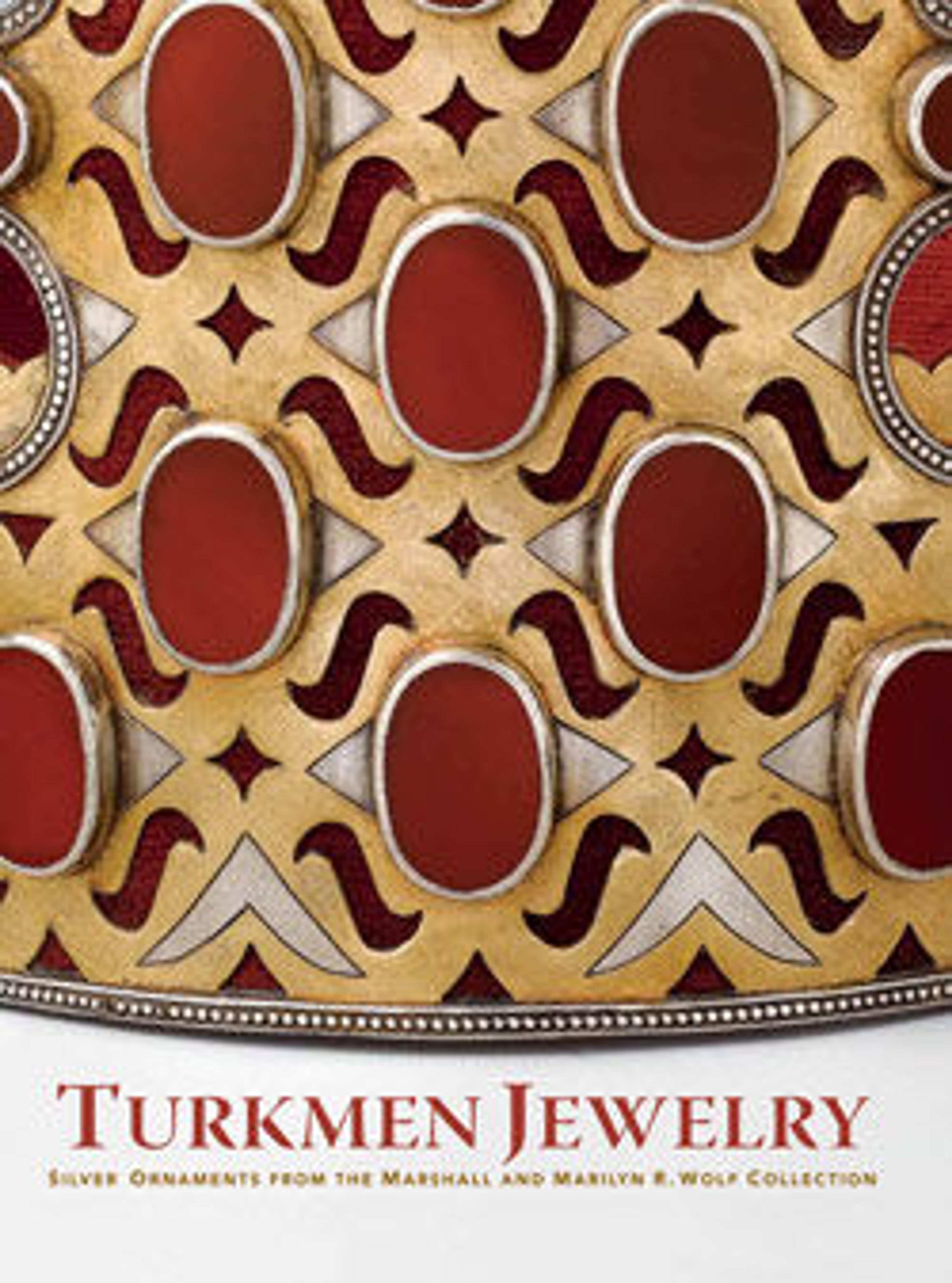Triangular Amulet Holder
This piece of silver jewelry takes the form of a triangle, or a tumar, and rested on the wearer's chest. Tumar-shaped jewelry usually consists of three sections: a triangular mountain motif, a bozbend tube meant for prayer scrolls, and an inverted mountain symbol from which spherical pendants are suspended. This tumar is decorated with six horn motifs and embellished with twelve pieces of red glass. Different from other glass embellishments, these are set in false granulated borders--in the shape of cartouches and teardrops--and are covered with vine and geometric filigree.
Artwork Details
- Title:Triangular Amulet Holder
- Date:late 19th–early 20th century
- Geography:Country of Origin Central Asia
- Medium:Silver with stamped beading, decorative wire, ram's-head terminals, glass inlays over red foil, lacquer, or cloth, wire chains, and spherical beads.
- Dimensions:H. 11 1/2 in. (29.2 cm)
W. 9 3/8 in. (23.8 cm) - Classification:Metal
- Credit Line:Gift of Marshall and Marilyn R. Wolf, 2006
- Object Number:2006.544.9
- Curatorial Department: Islamic Art
More Artwork
Research Resources
The Met provides unparalleled resources for research and welcomes an international community of students and scholars. The Met's Open Access API is where creators and researchers can connect to the The Met collection. Open Access data and public domain images are available for unrestricted commercial and noncommercial use without permission or fee.
To request images under copyright and other restrictions, please use this Image Request form.
Feedback
We continue to research and examine historical and cultural context for objects in The Met collection. If you have comments or questions about this object record, please contact us using the form below. The Museum looks forward to receiving your comments.
